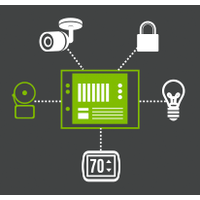As humans, it is common for us to get set in our ways. Change is never perceived as easy, and as Stan Goldberg said in Psychology Today, “being is easier than becoming”. But in the overlap of technology advancements with organizational safety initiatives, the obligation to move forward to provide better ways to save lives and keep our people informed during an emergency is alive and well. Although we can be resistant at times, we must make continuous changes to stay with the times and improve.
We must look for ways to better prepare before emergencies occur, improve response during an emergency, and practice continuous analysis for improvements after an emergency. Leveraging your existing tools, like your emergency notification system, to automate your actions will remove human error and increase effectiveness before, during, and after an emergency.
To automate emergency notifications, you can be proactive in three steps:
1. Use an Omnimodal Approach
An Omnimodal approach to emergency notifications provides the greatest reach and ensures redundancy. But, with more communication channels, comes more time to get the message out using each one. However, by tying each communication channel to your emergency notification system, you can automate the sending of emergency alerts and broadcast to each different channel from one place.
2. Send All at Once
Once you are Omnimodal, integrate the emergency channels that will be utilized, identify who your audience is, and define what you will say for each potential emergency. Document and implement all of this into your emergency notification system ahead of time. Then, when you have an incident requiring notification and response, you can just launch automatically - initiating the respective actions. Less thinking, less time, less stress.
3. Tie All Systems Together
Up until this point, your only action is to launch what you have already set up in your emergency notification system. However, you can even remove that step and leverage automation to decrease the time to initiate and remove any potential human error. You can tie your internal information systems or monitoring services (IT monitoring softwares, weather service alerts, door access control systems, panic buttons, intrusion alert systems, etc.) to your emergency notification system to automatically launch your notifications and response.
While these steps may take some time and effort, the payoff is well worth it. When the moment comes and you or your team need to take action, by initiating notification and response you will reduce stress, decrease potential human error, decrease response time, and leave more time for you and your team to address the many other important things necessary to protect your people in a time of crisis.
To learn more about each of these steps, download the Insight: Leveraging Your Tools to Automate Emergency Notifications.


